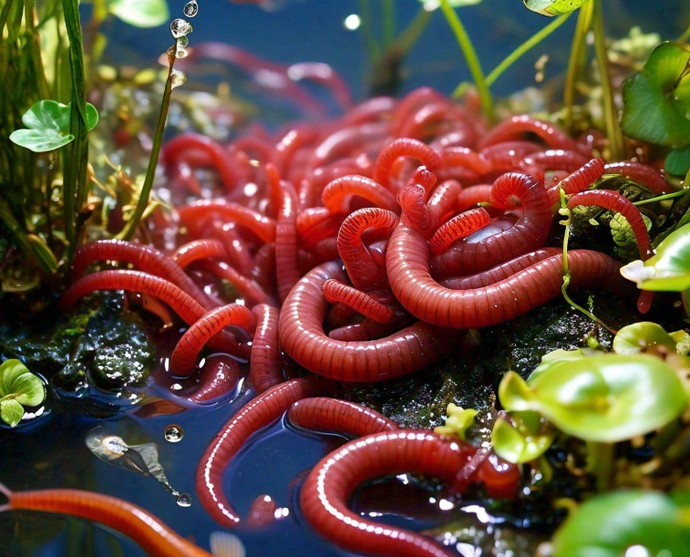Increase Soil Health And Wellness Normally With Red Wigglers
The assimilation of red wigglers into soil administration practices presents a compelling approach for improving dirt health normally. These earthworms not just transform natural waste right into beneficial vermicompost, but their natural behaviors also promote enhanced soil framework, oygenation, and nutrient accessibility. Comprehending the complexities of setting up and keeping an effective vermicomposting system is vital to totally take advantage of their advantages. Discovering the necessary steps and prospective challenges involved can dramatically impact the performance of this sustainable approach. What crucial facets should be thought about to maximize the benefits of these remarkable decomposers?
Benefits of Red Wigglers

Moreover, red wigglers enhance soil framework by developing networks as they tunnel through the planet. This activity improves oygenation and drainage, helping with origin growth and ensuring that plants receive ample oxygen and dampness. Furthermore, the spreadings produced by red wigglers are high in nutrients such as nitrogen, phosphorus, and potassium, which are important for plant development.
Red wigglers additionally help in the decrease of damaging virus and parasites by outcompeting them for sources, additionally adding to a much healthier dirt atmosphere. Their existence can bring about a decrease in the requirement for artificial plant foods and pesticides, advertising lasting agricultural techniques. In general, integrating red wigglers into soil administration approaches provides an all-natural and effective methods of improving dirt vigor, thereby supporting robust plant growth and farming efficiency.
Establishing Up Vermicomposting
Establishing a vermicomposting system is a practical means to harness the impressive advantages of red wigglers in improving dirt wellness. red wigglers. To start, pick an appropriate container-- ideally, a plastic or wood container with a cover to keep moisture and temperature. The bin ought to have water drainage holes to avoid excess water build-up
Next, prepare bed linen product, which serves as an environment for the worms. Ideal materials include shredded paper, cardboard, or coconut coir. Go for a depth of 4-6 inches to offer appropriate room for the worms.
As soon as the bedding is in location, present the red wigglers, generally at a proportion of one extra pound of worms for each square foot of area in the bin. Following this, add cooking area scraps such as vegetables and fruit peels, coffee premises, and crushed eggshells. Avoid meat, dairy products, and oily foods, as these can bring in insects.
(Hickory)
Caring for Your Worms
Preserving the wellness of your red wigglers is essential for a thriving Our site vermicomposting system. Proper care ensures that these advantageous microorganisms can effectively break down organic issue and enrich your dirt.
Feeding your worms is another essential aspect of their care. Red wigglers flourish on kitchen scraps such as fruit and vegetable peels, coffee grounds, and smashed eggshells.
Temperature monitoring is important; worms choose a series of 55 to 77 degrees Fahrenheit. Make sure the bin is not subjected to direct sunshine or extreme cold. Lastly, on a regular basis check for signs of distress, such as too much worm movement or uncommon smells, to attend to any kind of possible troubles promptly. By following these standards, you will promote a healthy ecological community for your red wigglers.
Making Use Of Worm Spreadings in Soil
Worm spreadings, typically described as "black gold," are a powerful modification that can significantly boost dirt health and fertility. red wigglers. These nutrient-rich, organic fertilizers are generated by red wigglers during their digestion procedure, resulting in a finely distinctive product that is advantageous for plants and soil alike
Integrating worm castings right into your soil boosts its structure, boosting aeration and water retention. This is especially advantageous for sandy soils that drain also rapidly, along with heavy clay dirts that can become compacted. Worm castings are abundant with important nutrients, consisting of nitrogen, phosphorus, and potassium, which are important for plant growth.

Ultimately, making use of worm castings fosters a flourishing environment within the soil, bring about healthier plants and even more lasting horticulture practices.
Tips for Successful Composting
Effective composting calls for cautious interest to a couple of crucial principles that can substantially boost the quality of the final product. First, balance is essential; preserve a proper proportion of environment-friendly materials (nitrogen-rich) to brownish products (carbon-rich), ideally around 1:3. This balance promotes reliable decay and reduces smells.
2nd, aeration plays a crucial function. Frequently turning the compost heap enhances oxygen flow, which speeds up microbial task and speeds up the composting process. Objective for a heap dimension of a minimum of 3 feet by three feet to retain warm, which even more promotes disintegration.
(red wigglers)
Moisture content is another vital variable; the compost ought to be damp however not soggy. A good general rule is to achieve a wetness degree comparable to that of a wrung-out sponge. Way too much water can lead to anaerobic conditions, while inadequate can reduce down disintegration.
Lastly, check the temperature level of the compost. A temperature series of 130 ° F to 160 ° F shows energetic composting and aids eliminate virus and weed seeds. By adhering to these concepts, you will develop a nutrient-rich compost that sustains soil wellness and enhances plant growth.
Final Thought
Incorporating red wigglers right into horticulture practices boosts soil wellness via all-natural processes. These worms add to the breakdown of organic materials, resulting in nutrient-rich vermicompost that enhances dirt framework and fertility.